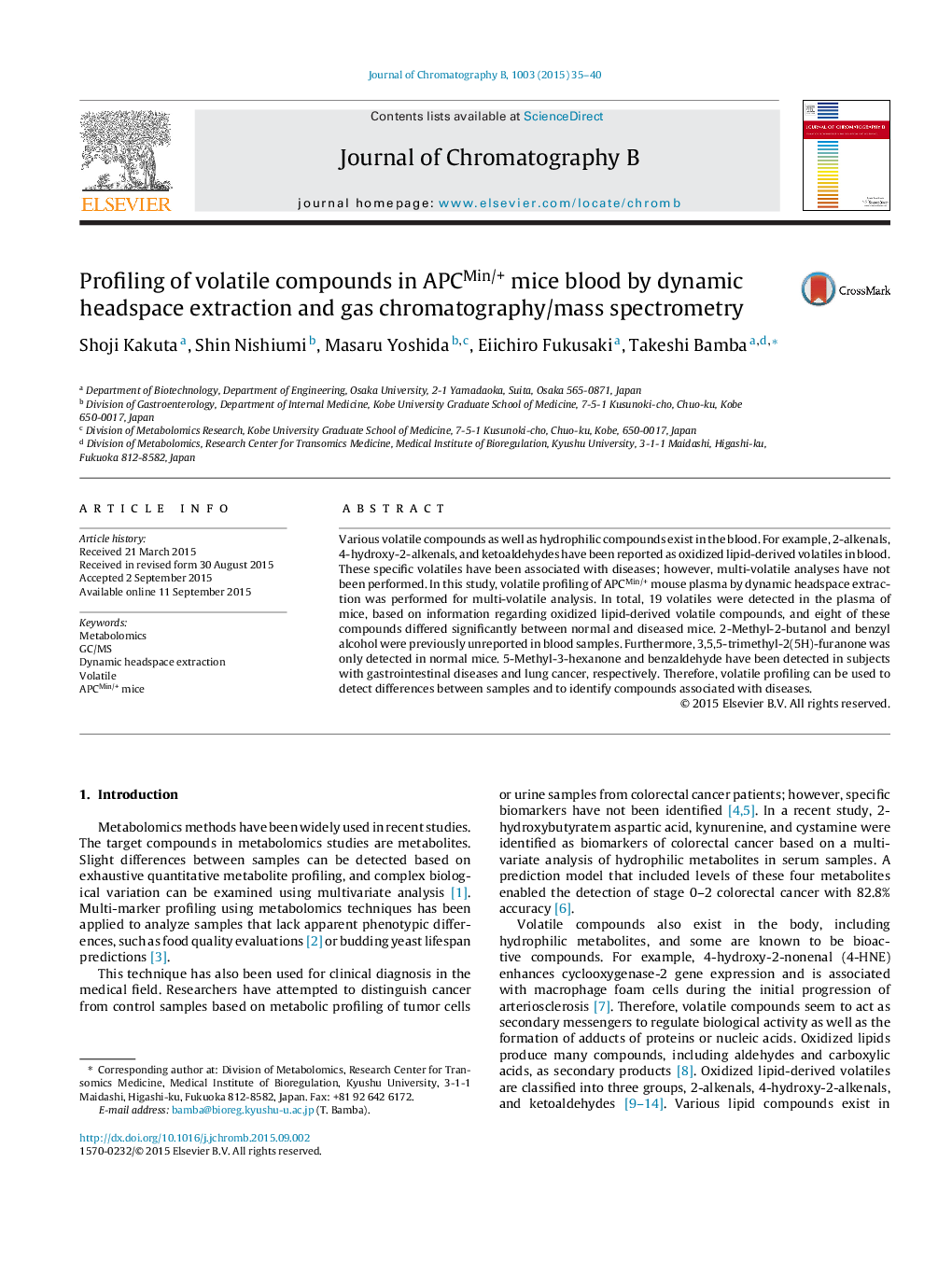| Article ID | Journal | Published Year | Pages | File Type |
|---|---|---|---|---|
| 1212016 | Journal of Chromatography B | 2015 | 6 Pages |
•DHS-GC/MS was used for volatile profiling of APCMin/+ mice blood.•Eight volatiles significantly differed between control and APCMin/+ mice.•3,5,5-Trimethyl-2(5H)-furanone was only detected in the control mice.•Volatile profiling could be used to show potential associations with diseases.
Various volatile compounds as well as hydrophilic compounds exist in the blood. For example, 2-alkenals, 4-hydroxy-2-alkenals, and ketoaldehydes have been reported as oxidized lipid-derived volatiles in blood. These specific volatiles have been associated with diseases; however, multi-volatile analyses have not been performed. In this study, volatile profiling of APCMin/+ mouse plasma by dynamic headspace extraction was performed for multi-volatile analysis. In total, 19 volatiles were detected in the plasma of mice, based on information regarding oxidized lipid-derived volatile compounds, and eight of these compounds differed significantly between normal and diseased mice. 2-Methyl-2-butanol and benzyl alcohol were previously unreported in blood samples. Furthermore, 3,5,5-trimethyl-2(5H)-furanone was only detected in normal mice. 5-Methyl-3-hexanone and benzaldehyde have been detected in subjects with gastrointestinal diseases and lung cancer, respectively. Therefore, volatile profiling can be used to detect differences between samples and to identify compounds associated with diseases.
